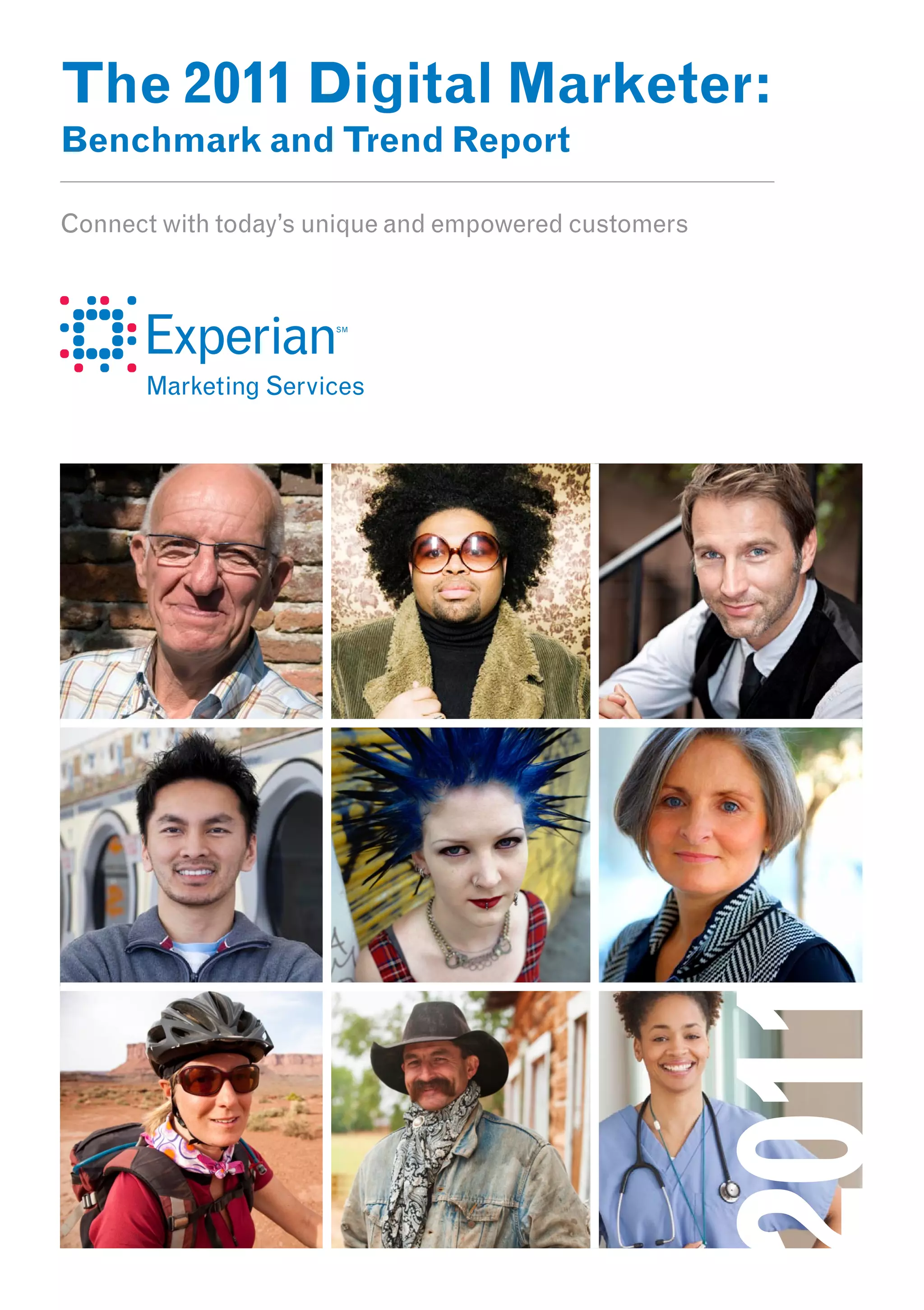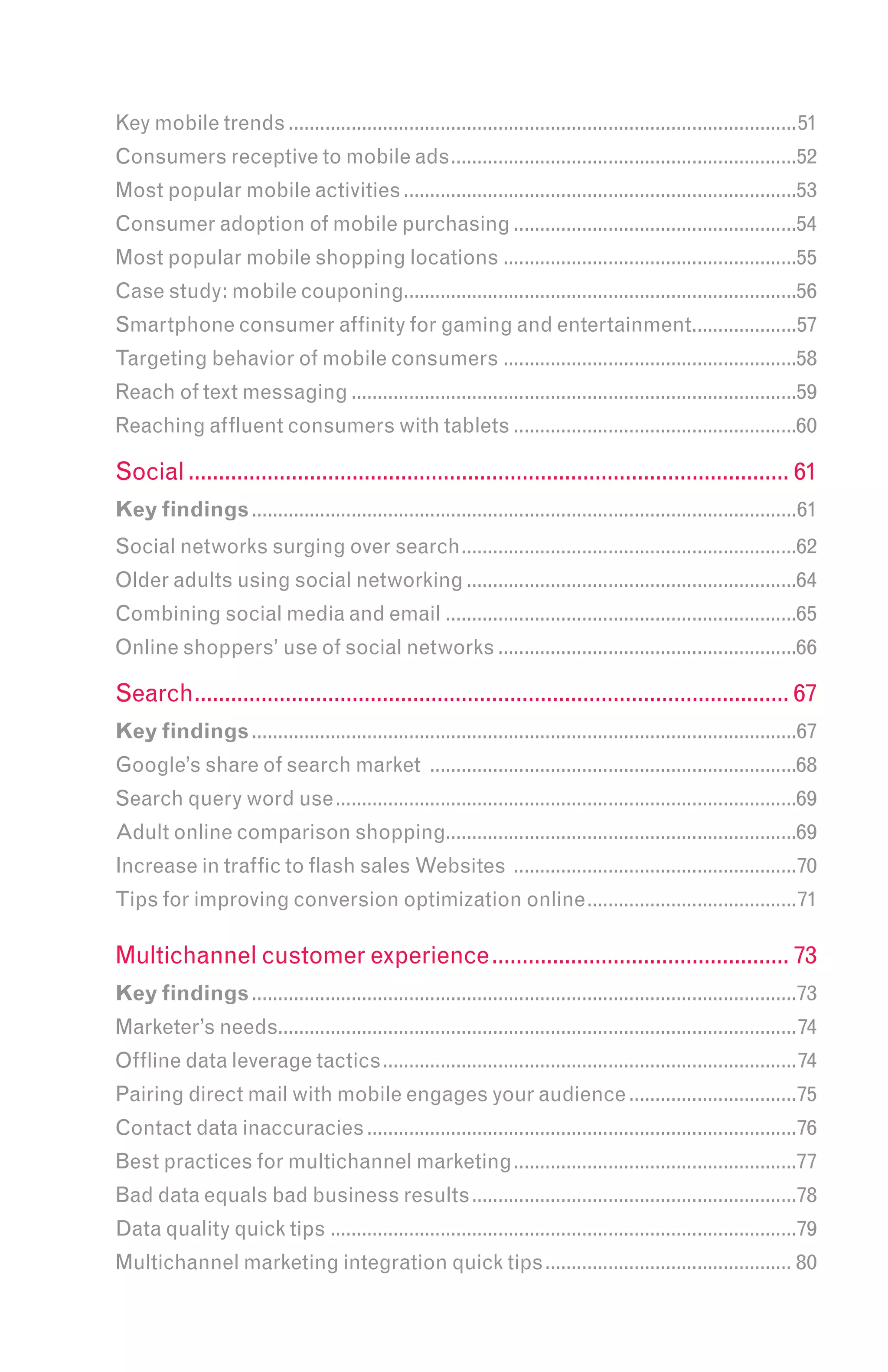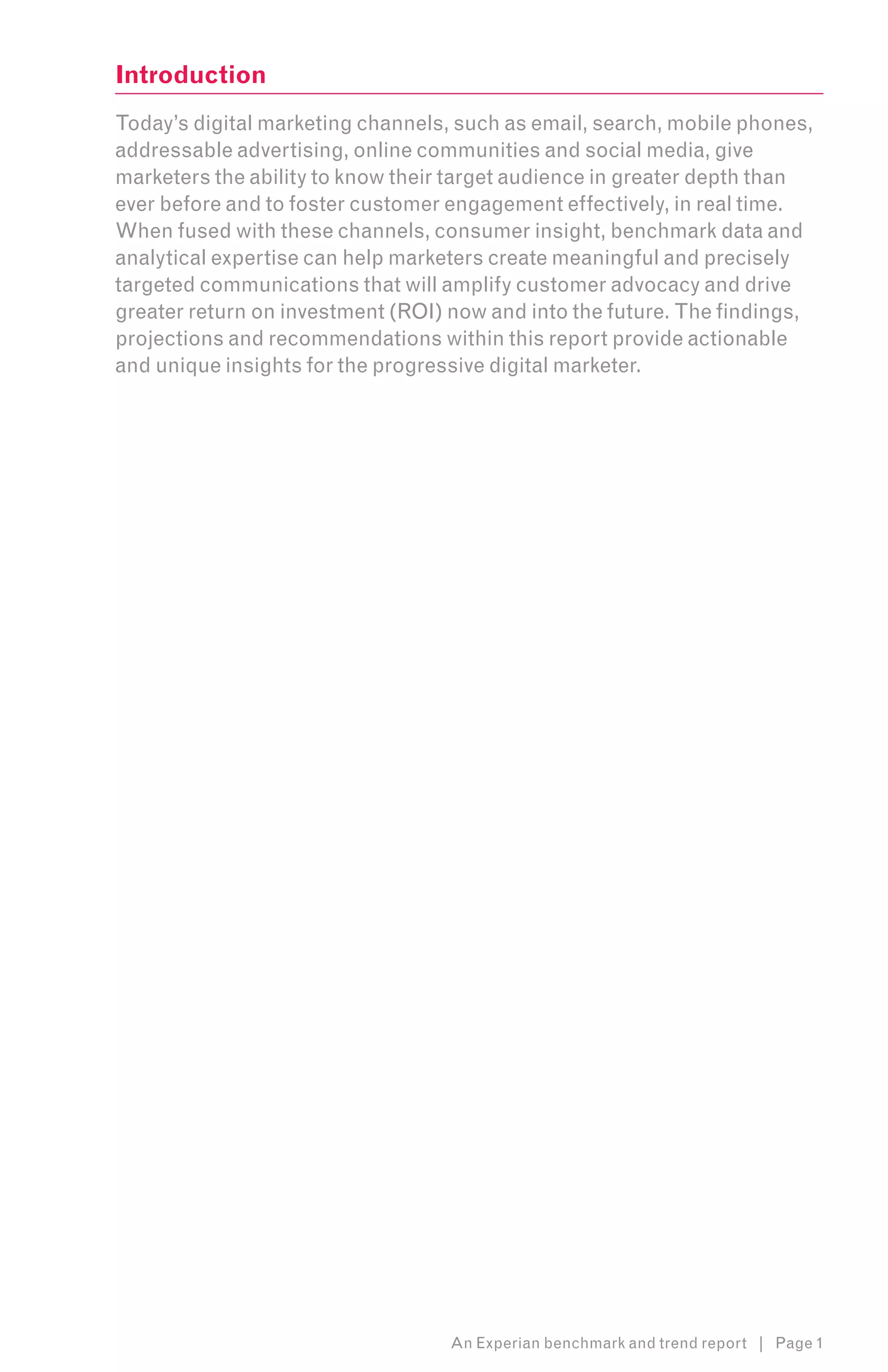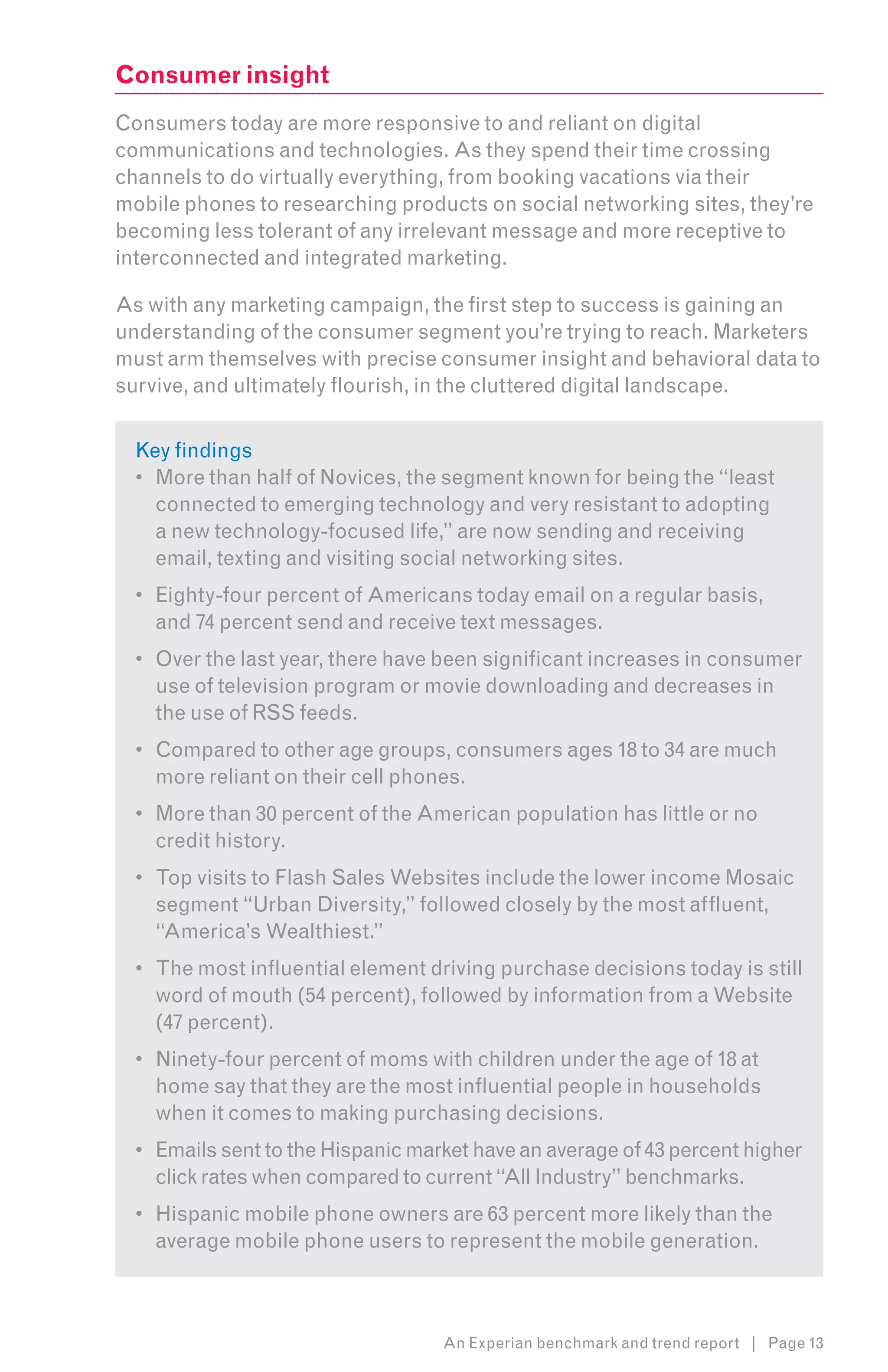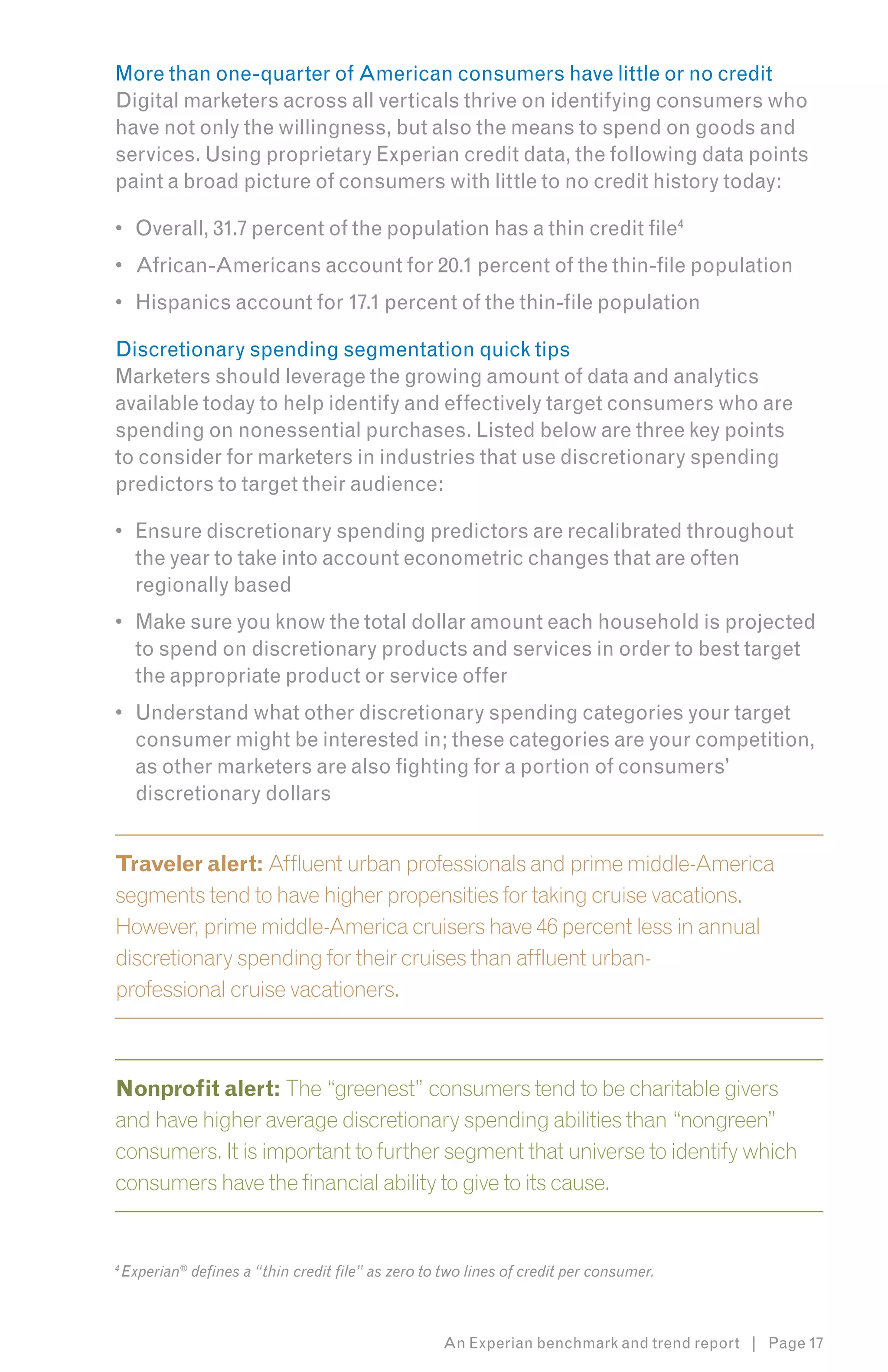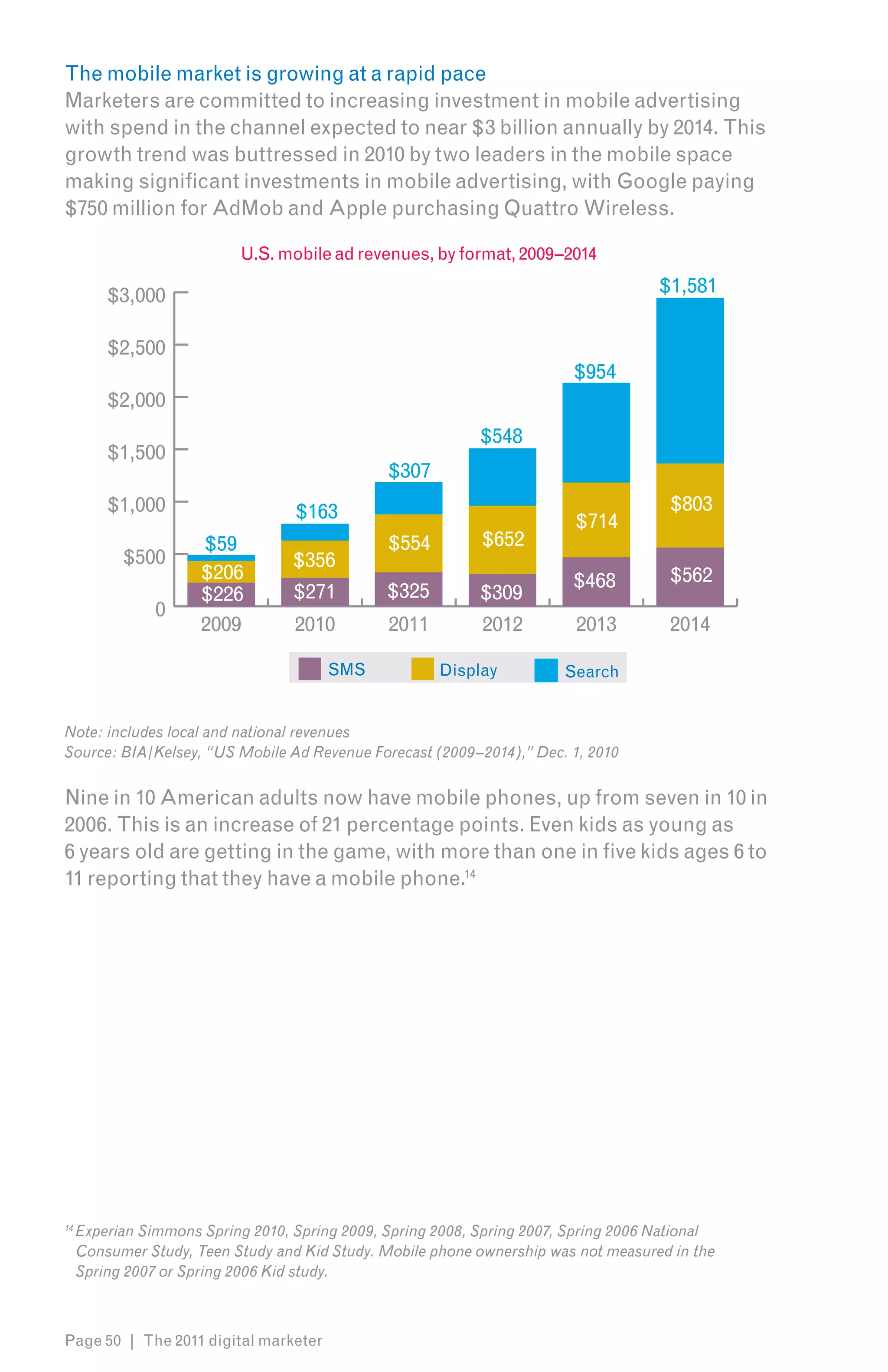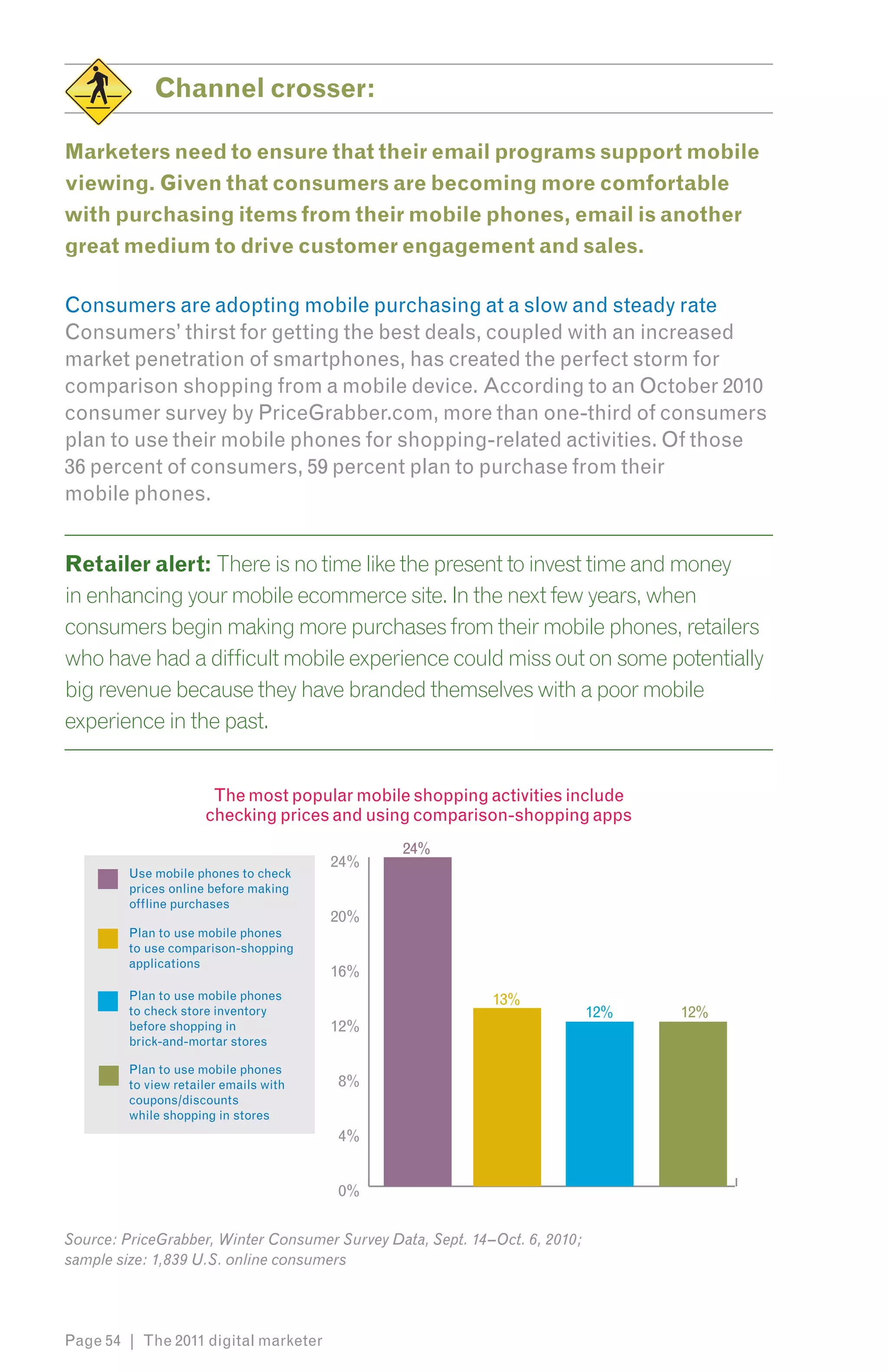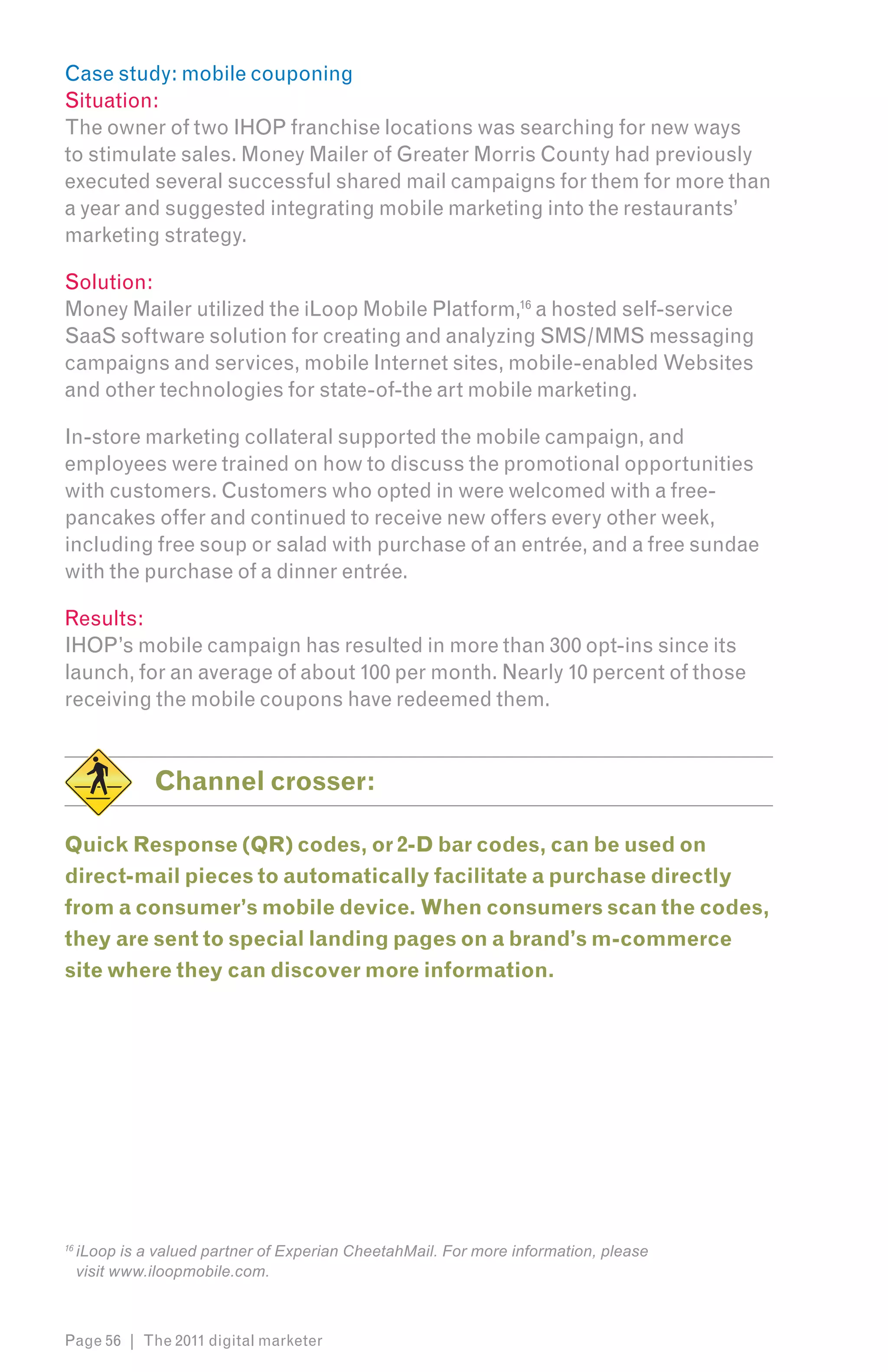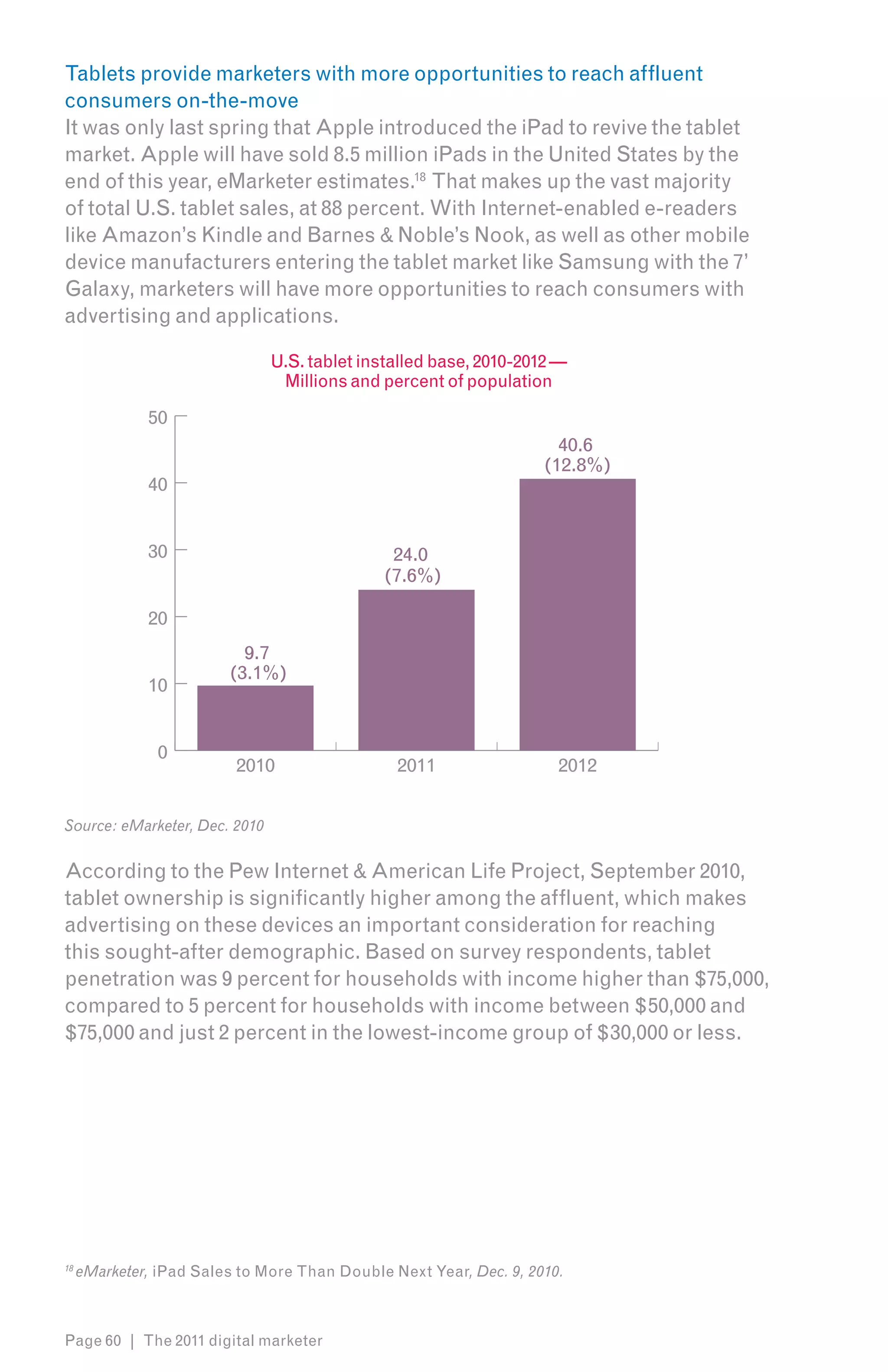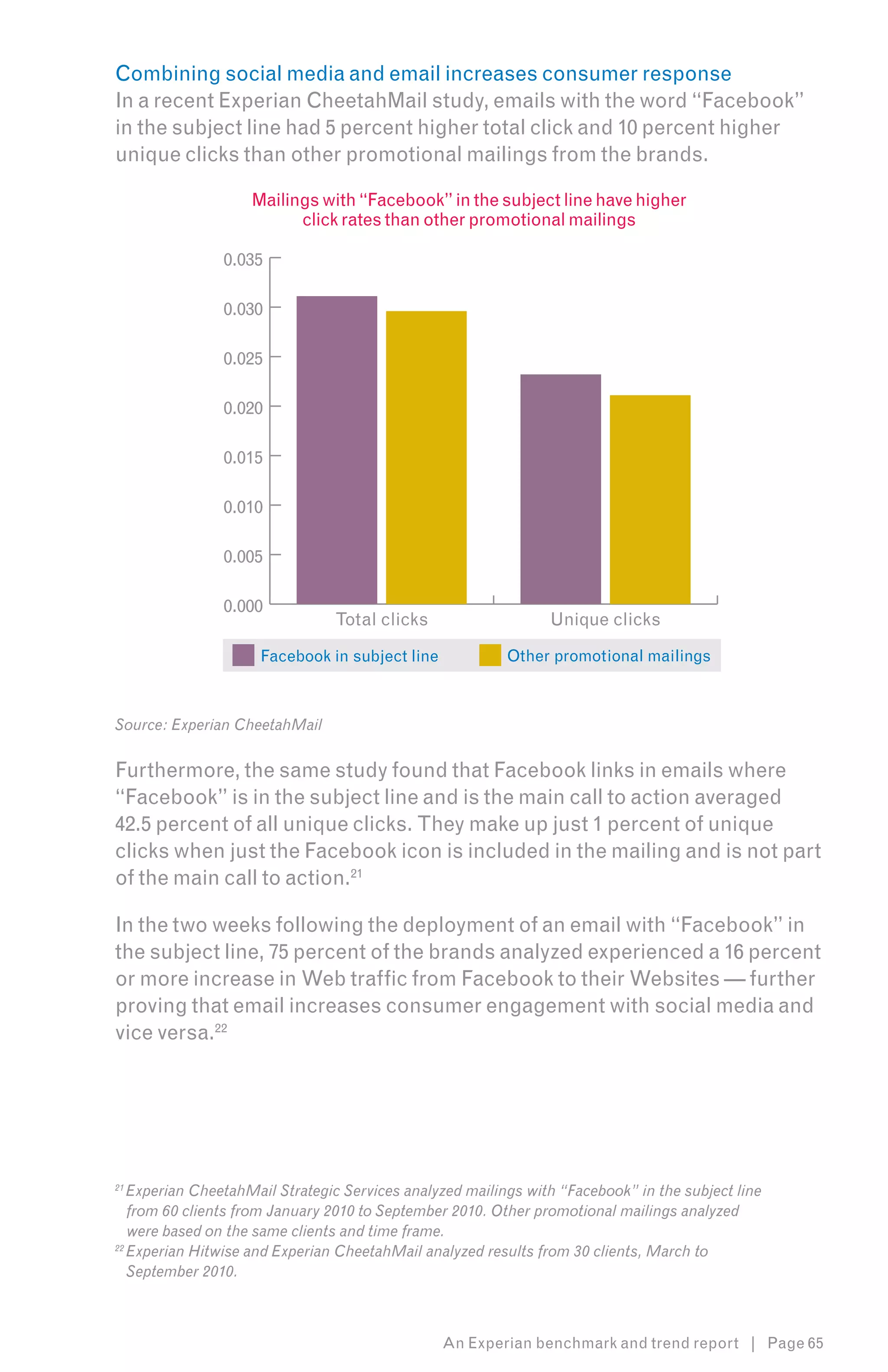The document provides an overview of key trends in digital marketing and consumer behavior in 2011. Some of the main points include:
1) Consumer spending and economic outlook remains cautiously optimistic, with younger consumers being more optimistic than older consumers.
2) Household composition is changing, with more adult children moving back in with parents, due to economic pressures.
3) Brand loyalty increases with age and education level, providing an opportunity for marketers to focus on loyalty programs.
4) New technologies like group buying sites have gained mainstream adoption, with over half of visitors to Groupon being older than 35. Understanding changing consumer behaviors will be important for marketers in 2011.
